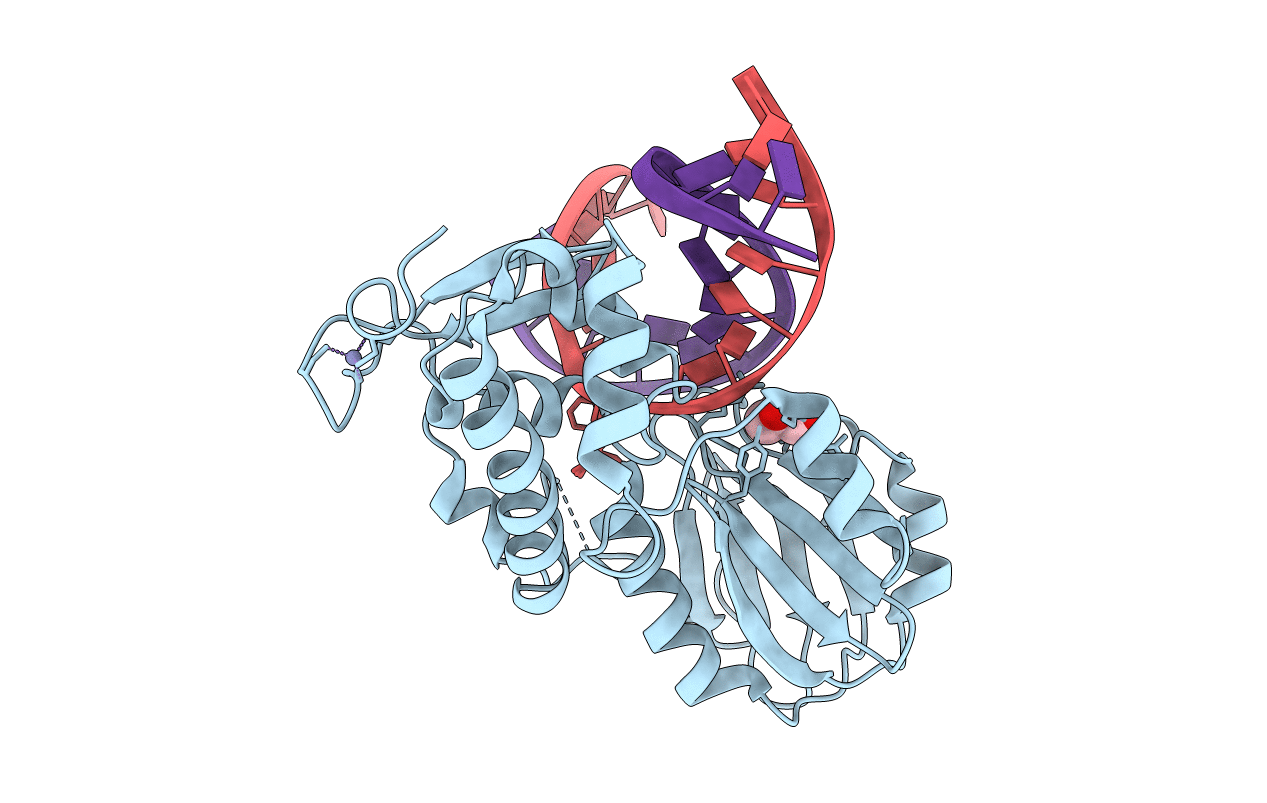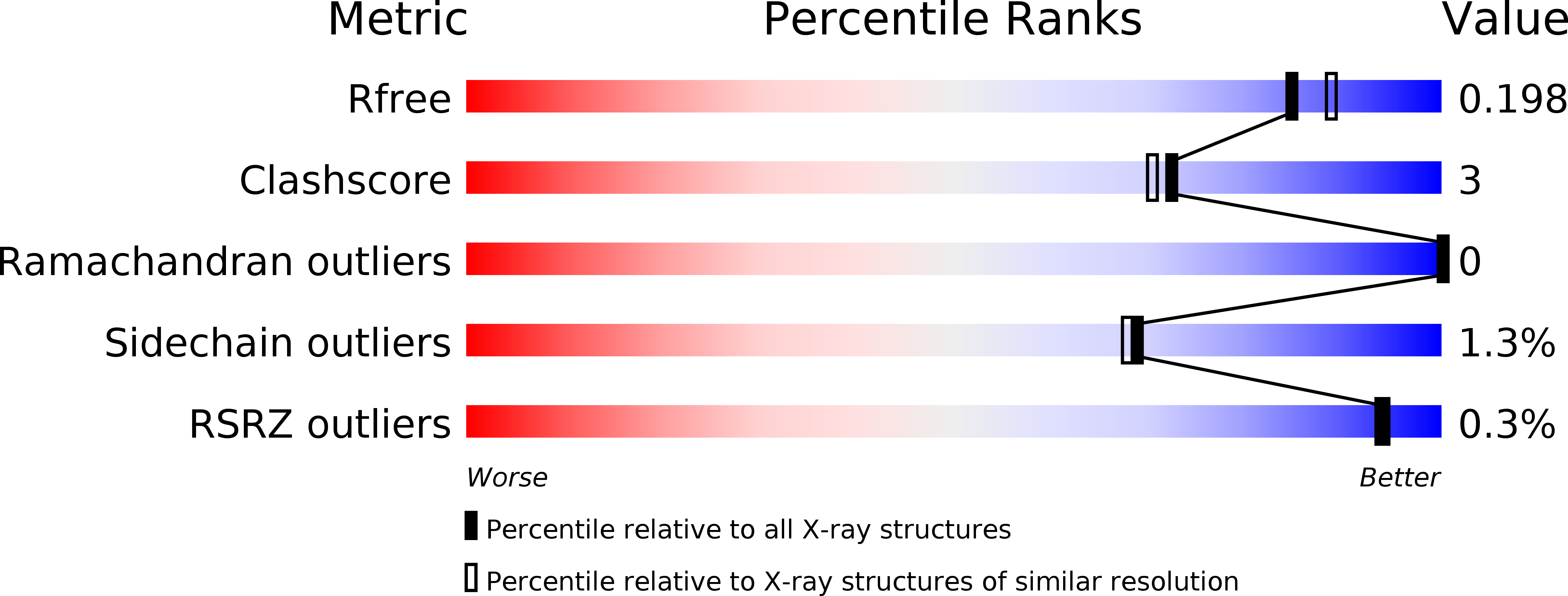
Deposition Date
2008-01-31
Release Date
2008-12-16
Last Version Date
2023-11-01
Entry Detail
PDB ID:
3C58
Keywords:
Title:
Crystal structure of a complex between the wild-type lactococcus lactis Fpg (MutM) and a N7-Benzyl-Fapy-dG containing DNA
Biological Source:
Source Organism:
Lactococcus lactis (Taxon ID: 416870)
Host Organism:
Method Details:
Experimental Method:
Resolution:
1.90 Å
R-Value Free:
0.20
R-Value Work:
0.17
R-Value Observed:
0.17
Space Group:
P 41 21 2


